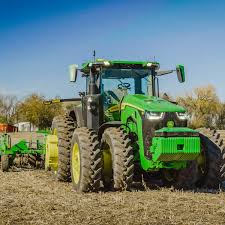Introduction
Fireproof cladding plays a vital role in protecting buildings from fires. Made from non-combustible materials, fireproof cladding helps structures withstand flames and prevents fire from spreading externally. With municipalities enforcing stricter building codes regarding fire safety, more builders are opting for fireproof cladding solutions.
Fire Risks and Prevention
Building fires remain a significant risk as modern structures accommodate extensive electrical wiring and utilize flammable furnishings. In the U.S., annual property losses due to structure fires amount to over $11 billion. While internal fires may be contained using detectors and sprinklers, external fire spread can lead to more extensive damage. Fireproof cladding acts as a barrier, keeping flames confined and allowing occupants precious evacuation time. Tests show that non-combustible enclosures can withstand temperatures over 1,800°F for hours without failing. By delaying fire spread, cladding ensures isolated internal incidents do not escalate into full structural collapses.
Common Cladding Materials
Leading fireproof cladding materials are non-metallic mineral products including concrete, concrete masonry, brick and stone. Made primarily from sand, gravel, cement and water, concrete displays excellent fire resistance due to its non-flammable composition. Concrete masonry and brick provide fireproof enclosures while retaining decorative aesthetics. Their composition of fired clay makes bricks resilient to high heat. Natural stone like granite and limestone are zero-flame-spread materials that do not burn or decompose under fire.
Metals for External Walls
While not suitable for internal applications due to toxic smoke and drippings, several metals make effective fireproof cladding for external walls. Aluminum, when combined with a permanent paint coating, has intrinsic fire resistance from its high melting point. Proper seals at joints prevent flame penetration. Steel profiles like sandwich panels feature two thin steel facings separated by a non-flammable core like mineral wool. Their strength retains structural integrity in fires, blocking pathways for air that fuels combustion. Zinc and copper alloys gain fire resistance from their non-combustible nature and ability to self-extinguish by acting as a heat sink.
Adhering to Codes
Building regulations internationally now impose strict constraints on external wall performance in relation to fire spread. The U.K.’s Regulatory Reform (Fire Safety) Order of 2005 requires external walls and attachments not to present uncontrolled fire spread risk. ASTM E108 in the U.S. evaluates non-load-bearing enclosure ratings from 15 minutes to 4 hours. To satisfy evolving codes, construction professionals turn to tried and tested fireproof cladding systems backed by extensive certification testing on flame spread, ignition resistance and structural durability when exposed to severe fires. Only non-combustible materials listed in standards qualify as code-compliant fireproof cladding options.
Specific Applications
Fireproof cladding finds diverse construction applications. In high-rise buildings with crowded urban footprints, non-combustible facades prevent fires originating on lower floors from engulfing the entire structure within minutes. For infrastructure projects, cladding ensures transportation hubs, power stations and industrial plants do not rapidly become infernos in emergency scenarios. Healthcare facilities depend on fire-resistant walls to safeguard patients and checked cladding seals entry points for toxic smoke. Educational institutions utilize non-flammable enclosures tested to withstand internal accidents or external arson without catastrophically failing. Even detached residential structures gain security through code-listed fireproof cladding systems.
Recognized Systems
Leading construction firms have long offered fireproof cladding solutions pre-tested and routinely specified on commercial projects. Promat offers non-combustible PROMASEAL and ISOLATEK barriers backed by wave after wave of successful fire endurance certifications. Rolitherm steel from Tata Steel maintains durability when exposed to intense heat radiation, redirecting it outward instead of propagating flames through cavities. Pyrobelite sandwich panels from Kingspan feature inherent fire resistance from mineral wool cores, retaining structural stability for multiple hours even in 1,800°C blazes. CertainTeed’s non-combustible fiber cement boards furnish proven fireproof cladding for demanding applications while meeting European classification standards.
Benefits of Fireproofing
Beyond ensuring building safety codes are addressed, opting for fireproof cladding delivers advantages. Fire-resistant enclosures protect both lives and assets by limiting internal damage and preventing total structural loss. They allow occupants vital time for orderly evacuations. Property owners gain peace of mind through reduced insurance rates applicable to buildings enclosed by proven non-flammable wall systems. Fireproof cladding also enhances a structure’s longevity as non-combustible materials maintain integrity after fire incidents instead of needing replacement like burnt combustible alternatives. And code-approved cladding satisfies due diligence requirements of construction professionals.
*Note:
- Source: Coherent Market Insights, Public sources, Desk research
- We have leveraged AI tools to mine information and compile it



